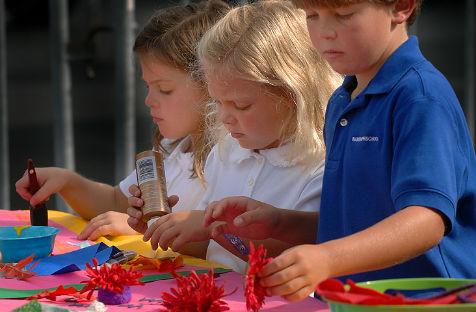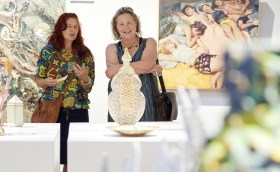The current preoccupation with literacy and numeracy, essential though they are, has dysfunctional effects as far as other important outcomes are concerned.
We cite the evidence in Transforming Education through the Arts of how the arts have been side-lined to a large extent in England and the United States that has been similarly pre-occupied, if not obsessed with standardised testing.
In a powerful critique of Australia’s preoccupation with national testing in literacy and numeracy, Richard Gill, then Director of the Victorian Opera, declared that ‘this abhorrent method of assessing children, teachers and their students needs to stop now’. He argued that the tests and associated transparency in results for all schools in the country on the My School website have ‘nothing to do with the education of a child’.
‘Evidence is now available that schools all over the country are cutting back on arts education to devote more time to subjects that make children literate. It can demonstrably be proven that activities used in teaching for the national tests destroy individuality, stifle creativity, stultify thought and make all children respond in the same way – a sort of educational circus in which the children are the trained animals and the teachers the poorly paid ringmasters,’ writes Gill.
What will it mean to a nation if Richard Gill is correct and, moreover, the curtailment of arts education, including music education, not only robs students of the intrinsic benefit of an artistic experience but further reduces the performance of students in literacy and numeracy? What will it mean to a nation if such a cut-back increases the gap between high- and low-performing students on these same tests and decreases the life chances of students, even to the extent of increasing the probability they may subsequently be involved in crime or other anti-social behaviour?
Research worldwide confirms that participation in the arts may increase academic outcomes, increase IQ, improve literacy and numeracy, and improve attendance, resilience, self-regulation, self-esteem, identity, self-concept, self-efficacy and motivation, empathy, tolerance, cooperation, collaboration and communication’.
Here are four conclusion and associated recommendations that follow from the evidence.
- Australia may be in breach of UNESCO’s Convention on the Rights of the Child in respect to opportunities for participation in the arts. Public and private resources should be committed to ensure that every student at every level of schooling has an opportunity to participate in arts.
- There is incontrovertible national and international evidence of the benefits of participation in arts education, not only for the intrinsic benefits of such participation but also for the benefits it brings to learning and personal and social wellbeing. Arts education should form part of the curriculum of every school. It is critical that the arts component of the Australian curriculum be implemented in every school.
- Australian research in primary schools in highly disadvantaged settings suggests that, in addition to other benefits, students may gain up to a year in NAPLAN scores in reading if they participate in arts education. The tens of millions of dollars spent on a range of strategies to improve results on NAPLAN tests have had minimal effect. There should be a reallocation of funds to support arts education for all students, with the highest immediate priority being for students in disadvantaged settings.
- Partnerships of organisations and institutions in the public and private sectors are important, and there should be a substantial increase in funding for those in the private, not-for-profit sector such as The Song Room that provide programs that were the focus of research reported in this submission. Public support for such organisations is currently minimal compared to private support.
In May 2011 The Economist published a lead article on the future of Australia under the heading ‘The next Golden State’ with a sub-title ‘With a bit of self-belief, Australia could become a model nation’. Much of the article contrasted the social and economic potential of the nation with the narrowly-focused inward-looking discourse that it alleges is characteristic of politics in Australia. It looked at the characteristics of open, dynamic and creative societies as these have been created over the years in other nations and offered the following in respect to Australia:
‘Such societies, the ones in which young and enterprising people want to live, cannot be conjured up overnight by a single agent, least of all by government. They are created by the alchemy of artists, entrepreneurs, philanthropists, civic institutions and governments coming together in the right combination at the right moment. And for Australia, economically strong as never before, this is surely such a moment.’
This article is an edited extract of a keynote presentation to Arts Up Front: ACT Arts Education Conference.





